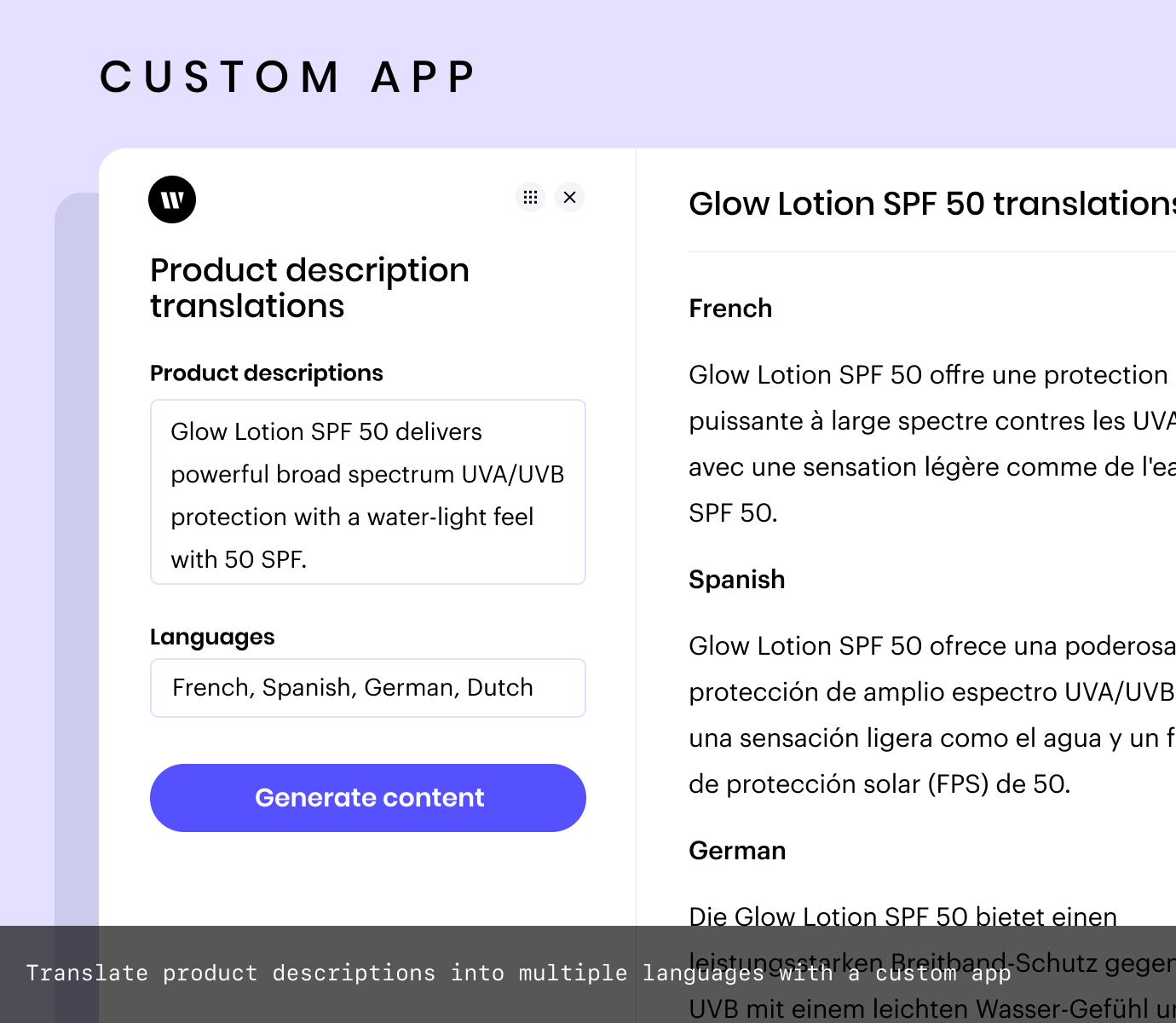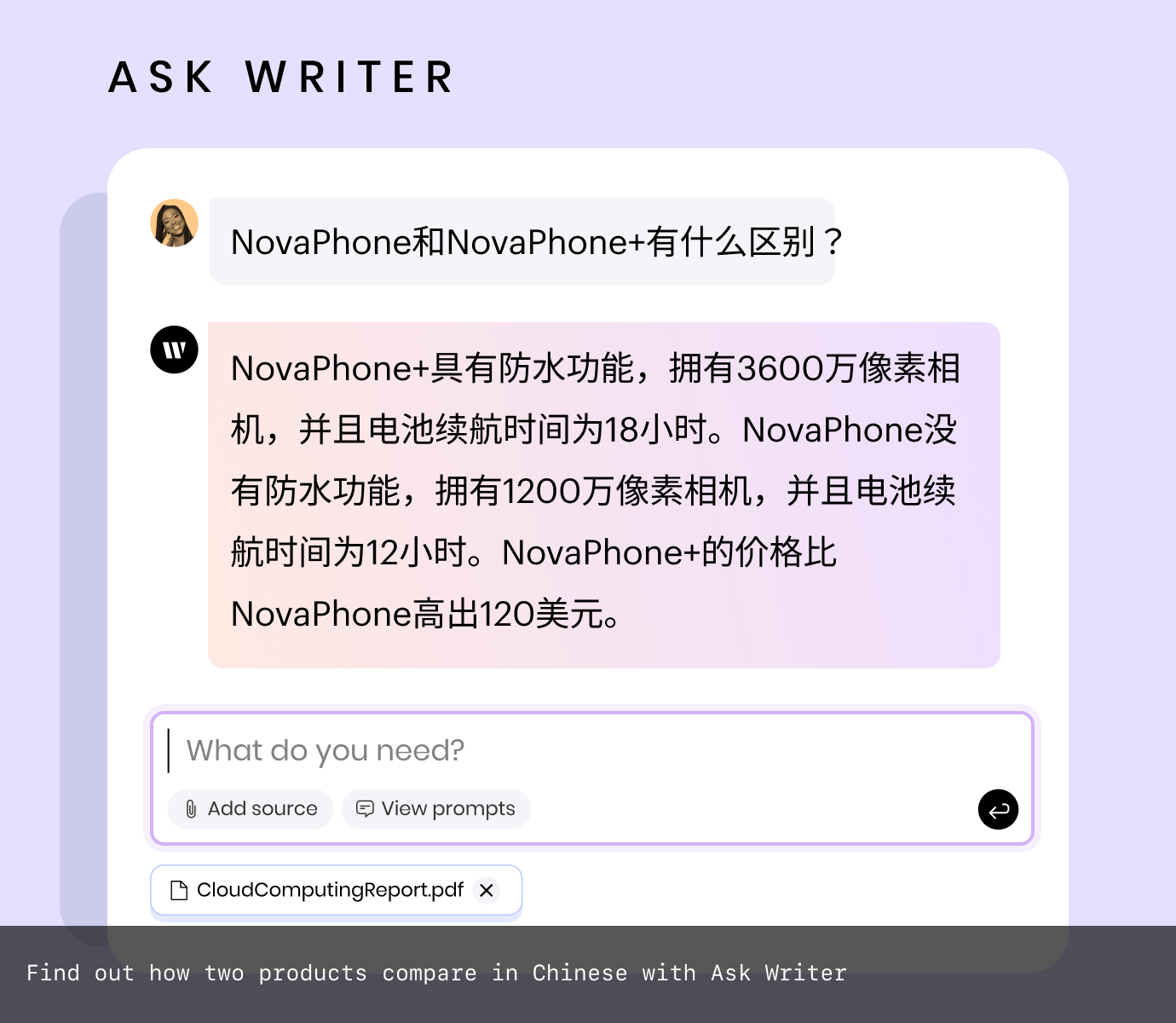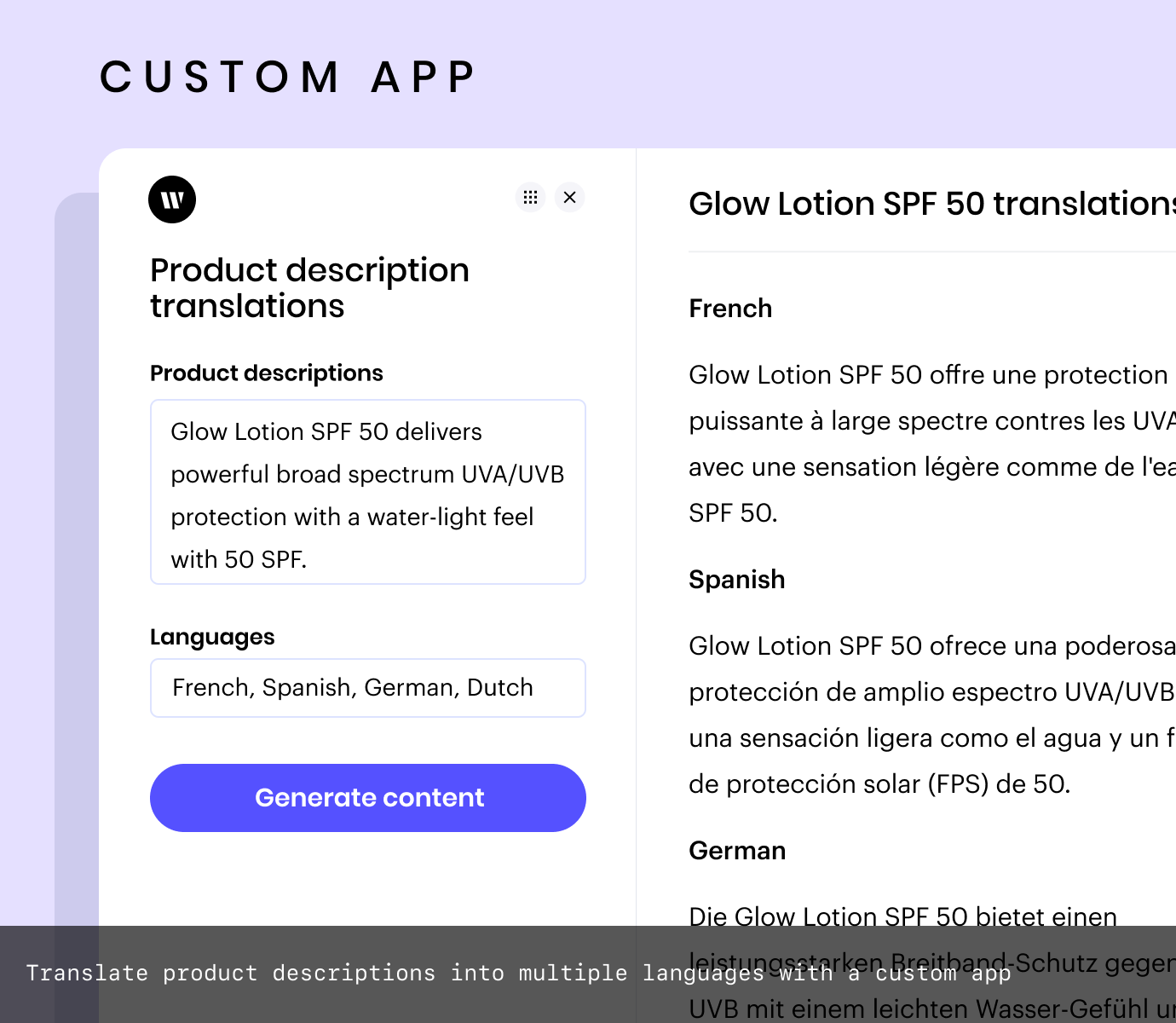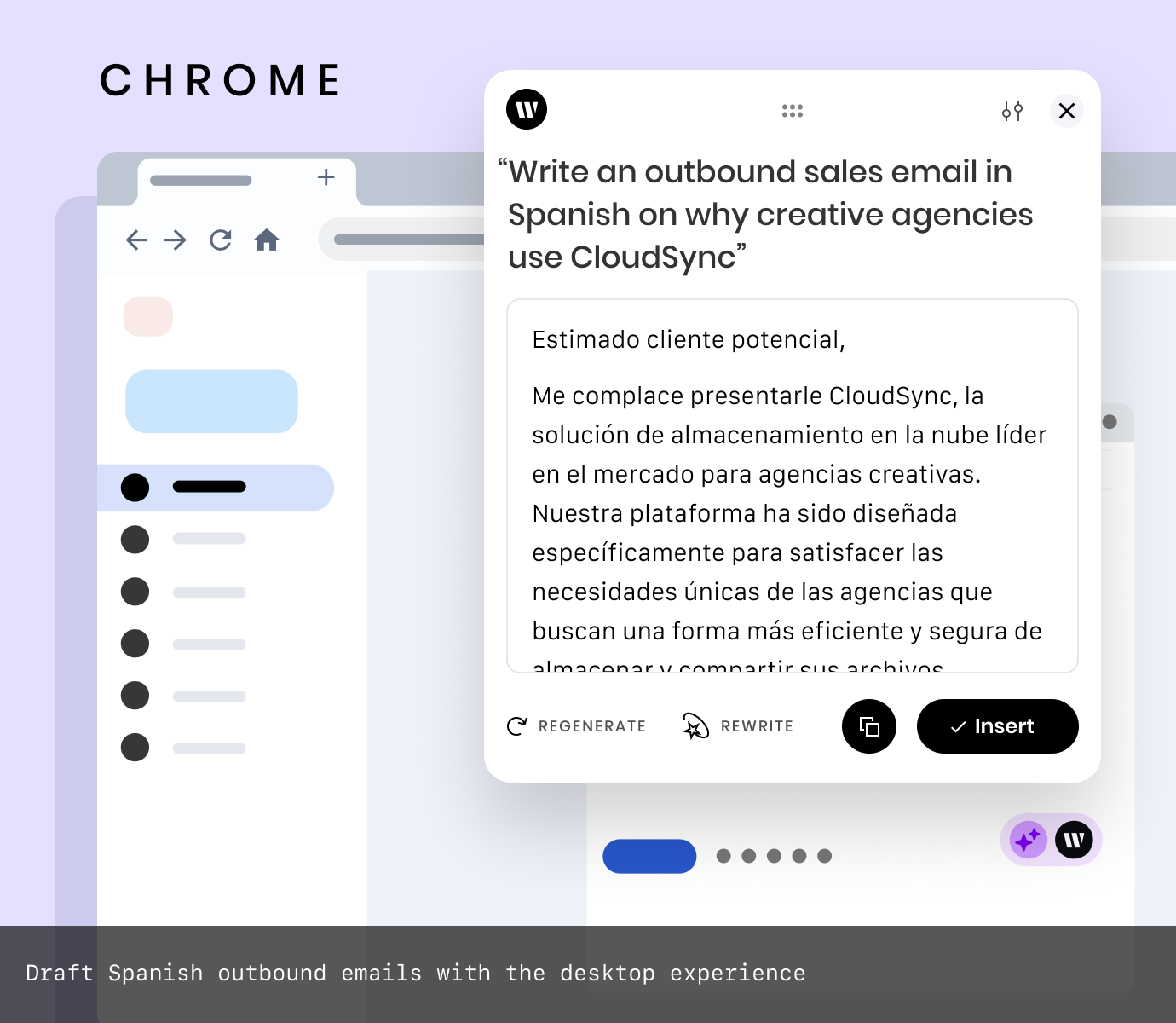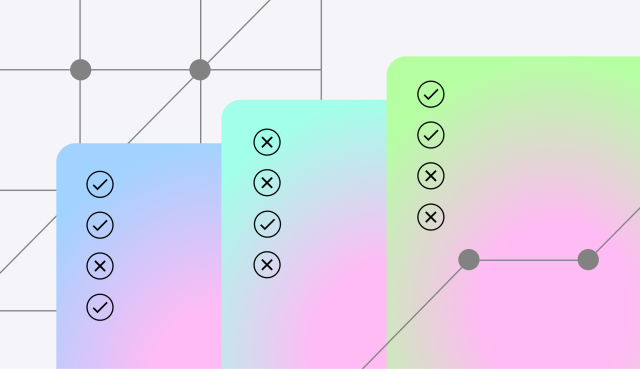AI in action
– 7 min read
How generative AI can be a force for equity and inclusion in the workplace
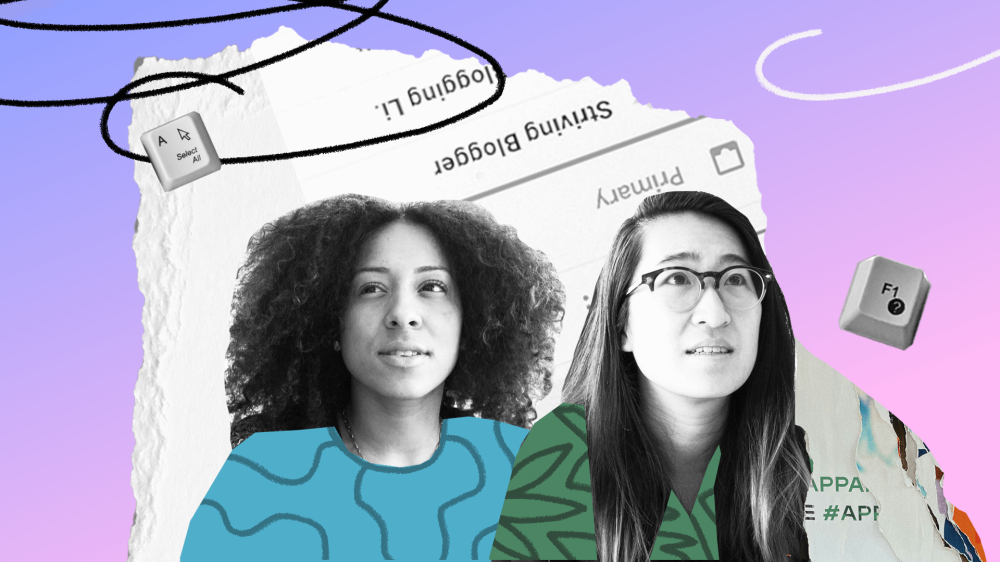
The workplace is often seen as a battlefield. That’s especially true for people who are historically “othered”, such as BIPOC, LGBTQIA+, non-native language speakers, neurodivergent people, women, and more. Amid the buzz of meetings, deadlines, and Slack notifications, there’s a constant struggle for equity, inclusion, and respect. This is where generative AI can make a real difference. It’s not just a tool — it’s a transformative force reshaping the rules of social engagement.
There are a lot of legitimate concerns about how bad actors can use this force for harm by amplifying biases and misinformation. At WRITER, we’re dedicated to increasing awareness around these issues and offering frameworks for responsible generative AI governance, adoption, and use.
That said, not enough people are talking about the massive potential of using generative AI to break down barriers and dismante the invisible walls that hinder progress. Let’s explore how generative AI is helping mitigate bias and discrimination in the workplace, bridging language gaps, and supporting people with cognitive and mental health challenges. Through these narratives, we showcase how generative AI acts as a force for equity and inclusion, leveling the playing field and empowering people to thrive in the workplace.
- Generative AI can help reduce bias and discrimination in the workplace by detecting and rewriting biased language in job descriptions, evaluations, and feedback.
- It can also assist neurodivergent professionals by providing personalized solutions, generating ideas, and helping with communication and social interactions.
- Language and cultural barriers can be overcome with the help of generative AI, which can act as a “business translator” and provide multilingual capabilities.
- Palmyra LLMs from WRITER can generate and translate text in over 30 languages, promoting inclusivity and enhancing productivity and understanding in the workplace.
- While generative AI can contribute to creating a more equitable workplace, organizations must prioritize training data quality, ensure human oversight, and integrate it with comprehensive DEI strategies.
Reduce bias and discrimination in the workplace
A staggering 91% of workers report that they have faced some form of workplace discrimination — whether it’s based on race, gender, disability status, age, weight, or sexual orientation. Biases can seep into job descriptions, performance evaluations, and employee feedback, perpetuating inequality.
Generative AI is helping to mitigate this issue by removing human subjectivity from the equation. Using algorithms and machine learning, AI tools can detect biased language in written content, such as job descriptions, performance evaluations, or employee feedback. Then, using generative AI capabilities, users can automatically rewrite biased text in more inclusive language.
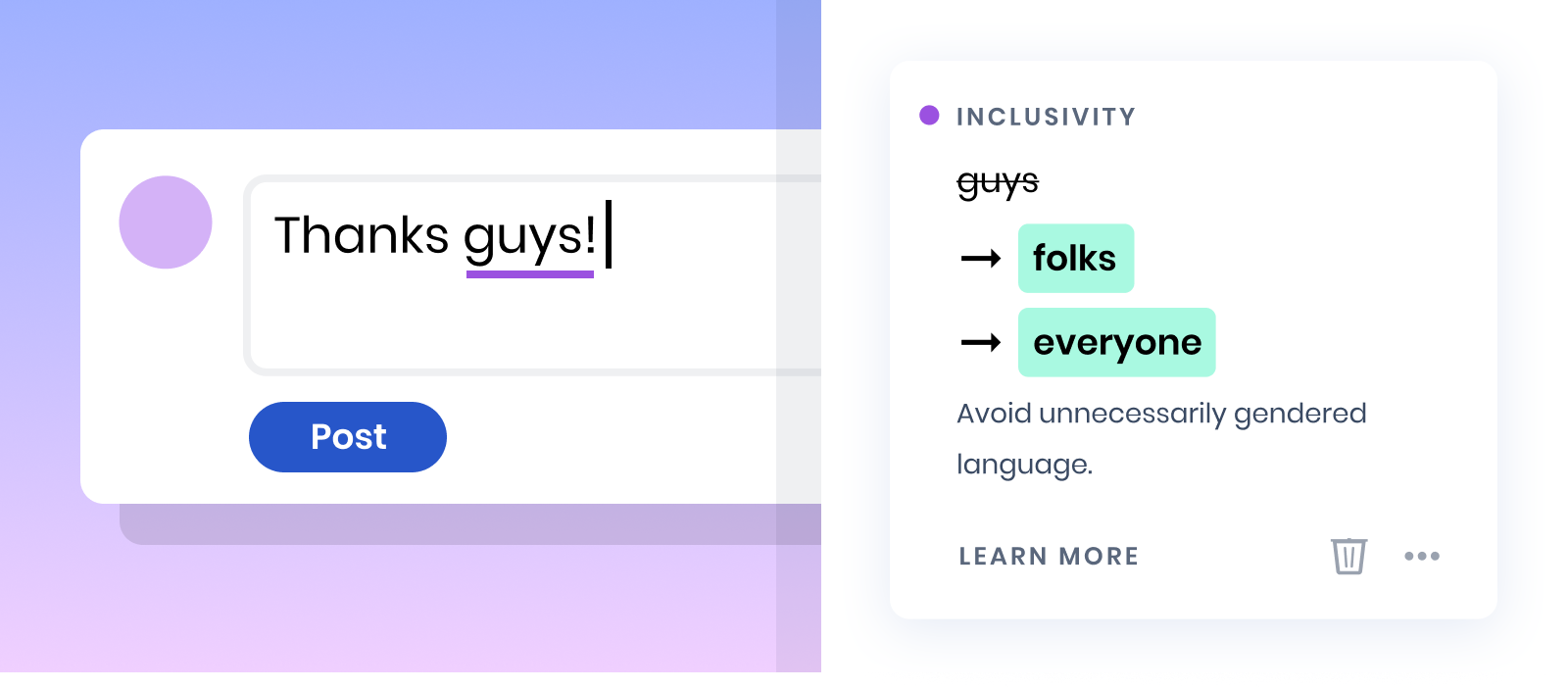
Take, for example, Intuit’s content design team, who used the WRITER API to build a Slack bot that monitors workplace communication and suggests more inclusive language. The bot has a private flagging feature, which discreetly suggests alternative phrasing to eliminate bias. This created a safe space for people to learn and improve without being called out publicly. The initiative had a profound impact on fostering a more inclusive culture at Intuit. Many employees expressed gratitude for the opportunity to contribute to a workplace that champions inclusion and inclusivity.
Level the playing field for neurodivergent people
Neurodivergent professionals are people who have neurodevelopmental differences or disorders, such as autism, ADHD, dyslexia, or other conditions that affect their cognitive functioning and behavior. They may face challenges in traditional work environments due to these differences, but they also bring unique perspectives, strengths, and skills to their professions. These professionals often require accommodations and support to succeed in their careers, but with the right accommodations, they can make valuable contributions to their fields.
Generative AI can be incredibly helpful for neurodivergent professionals in a variety of ways. Firstly, it can assist with tasks that may be challenging for neurodivergent people, such as organizing and scheduling, by providing personalized and efficient solutions.
Neurodivergent and disabled professionals often have a more limited amount of mental and physical energy than their neurotypical/able-bodied counterparts. Generative AI can support them by generating ideas and providing inspiration when they’ve reached their limits, energy-wise.
Additionally, generative AI can help with communication and social interactions, as it can generate responses and suggest appropriate language for different situations. This can be especially beneficial for autistic people who may struggle with social cues and communication.
Alaura Weaver, Senior Manager of Content and Community at WRITER, understands all too well the challenges faced by professionals with cognitive differences. As someone with autism and ADHD, she often finds it difficult to initiate conversations and create non-clichéd openings, especially in LinkedIn outreach messages. While Alaura is skilled in casual chit-chat, it requires a significant amount of cognitive energy for her.
The Ask WRITER chat interface, powered by generative AI, provides Alaura with a tool to generate personalized and non-clichéd openings for her LinkedIn outreach messages. By asking specific questions or seeking guidance on creating unique introductions, Alaura can receive suggestions from the AI-powered system. This empowers her to reach out and reconnect with friends and colleagues she hasn’t spoken with in a while, making the process more comfortable and enjoyable for her.
Bridge language and cultural barriers
Language and cultural barriers can create significant challenges in the workplace, especially for people whose first language isn’t English. In fact, over 54% of employees have reported experiencing language barriers in their professional lives. This statistic highlights a pervasive issue, showcasing the hurdles many people face in communicating effectively within their work environments.
Consider the experience of an IT manager from Brazil, who encountered the daunting task of effectively communicating with his company’s internal engineering team. Engineers are known for their intelligence, high expectations, and inclination to push boundaries. Lacking the fluency and nuances of a native English speaker, the IT manager quickly began to feel like an outsider looking in
However, everything changed when he discovered WRITER. The tool became his ally in crafting user stories that aligned with the internal engineering team’s style and voice. Additionally, he used WRITER to draft documents that summarized crucial user feedback in record time. Generative AI empowered him to not only stand toe-to-toe with the power structure but also earn a seat at the table.
Another barrier that faces non-native language speakers in the workplace is the prevalence of jargon and idioms. Generative AI can act as a “business translator” by turning jargony text into plain language — which boosts accessibility not only for non-native speakers, but also for anyone who may not speak “corporate-ese” or technical jargon.
Now, WRITER is kicking things up a notch through the release of its multilingual features. Palmyra LLMs, which power the WRITER platform, can generate and translate highly-accurate text in over 30 languages, including Spanish, French, Chinese, Hindi, Arabic, and Russian. This feature not only promotes inclusivity but also enhances productivity and understanding within the workplace. By harnessing the multilingual capabilities of WRITER, people can bridge linguistic gaps, communicate confidently and effectively, and collaborate across diverse languages.
Striking the balance: generative AI + human oversight = a more equitable workplace
By breaking down barriers, providing opportunities for growth, and fostering inclusivity, generative AI contributes to creating a workplace where more people can thrive. But it’s essential to approach it with a critical eye.
Organizations must prioritize training data quality, ensure human oversight, and integrate AI with comprehensive DEI strategies. By doing so, we can wield the power of generative AI to create people-first workplaces that are truly diverse, equitable, and inclusive.

